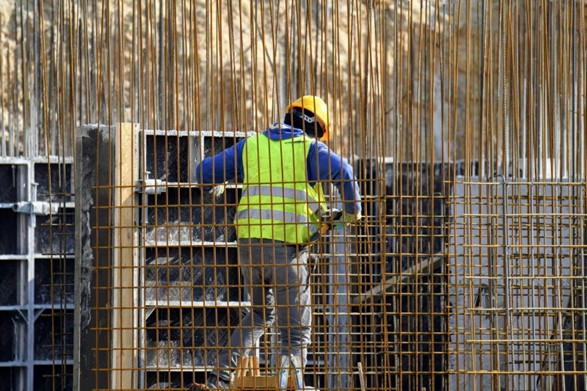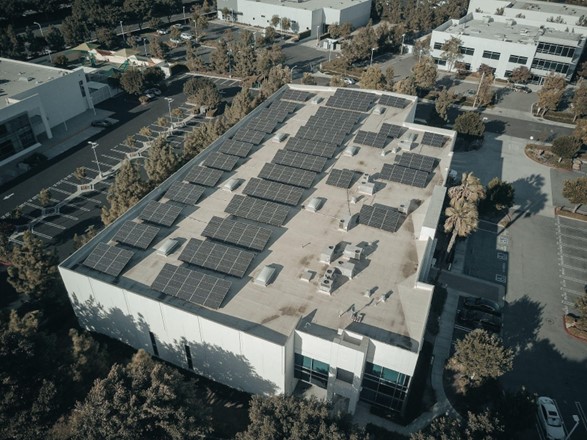
75 Construction Terms you should know in 2024 and beyond
The ultimate construction terminology cheat sheet
In the competitive and ever-evolving world of construction, staying ahead means more than just keeping up with the latest technological advancements and methodologies—it requires a deep understanding of the language that defines our work.
In 2024, the ability to communicate clearly and effectively is paramount. Whether you’re laying the groundwork for a new highway, connecting communities with state-of-the-art infrastructure, or spearheading essential utility projects, knowing the right terms is key to your success.
That’s where we come in. With our ultimate construction terminology cheat sheet, we’ve carefully compiled a list of 75 essential construction terms every professional should know. The purpose of this guide is to not just acquaint you with these terms but to lay down a strong foundation of knowledge that fosters improved collaboration and efficiency.
If you’re reviewing blueprints, discussing project scopes, or trying to understand the complexities of environmental regulations, this glossary will be your go-to resource for cutting through the construction lingo and getting straight to the heart of what matters.
Understanding basic construction terminology
We’ll start by laying down the basics of construction terminology. From the inception of an idea to the final execution, these terms are the building blocks for clear communication and successful project outcomes.
Here’s your construction terminology 101, featuring 15 essential terms.
- Blueprints: Detailed architectural plans or technical drawings that outline the design, dimensions, and materials of a construction project.
- Scope of work (SOW): A formal document that defines all aspects of a project, including tasks, deliverables, timelines, and responsibilities.
- Bid: A proposal submitted by contractors to undertake a construction project, detailing the cost and terms under which they agree to complete the work.
- Change order: A formal amendment to a construction contract, documenting alterations to the original scope, such as changes in design, materials, or timelines.
- Submittals: Documents, samples, or information provided by contractors to architects and engineers for approval, ensuring the materials and methods meet project specifications.
- Critical path: The sequence of stages determining the minimum time needed to complete a project, highlighting essential tasks that directly impact the timeline.
- Easement: A legal right to use another’s land for a specific, limited purpose, such as utility lines or access roads.
- Grade: The level of the ground around a building, which can be adjusted for drainage or aesthetic purposes.
- Load-bearing: Structural elements designed to carry and distribute weight, which are vital for ensuring the stability and integrity of a construction project.
- Punch list: A document detailing outstanding tasks or minor issues that need resolution before a construction project can be deemed complete. It includes any work that deviates from the contract’s specifications, including minor adjustments, fixes, or necessary modifications to meet the agreed-upon terms.
- Retainage: A portion of a contractor’s payment that is withheld until project completion, ensuring all work meets the required standards.
- Request for proposal (RFP): A document issued when seeking contractor bids for a project, outlining project specifics and selection criteria.
- Site plan: A detailed drawing representing the overall layout of a project, including structures, utilities, landscaping, and access routes.
- Subcontractor: A specialized individual or firm hired by the main contractor to perform specific tasks within the larger project.
- Zoning: Regulations governing land use and building requirements in specific areas, influencing project design and scope.

Project management and planning terms
At the core of every successful construction project lies effective project management and careful planning. These disciplines ensure that projects are not only completed on time and within budget but also meet or exceed quality standards.
This section covers important terminology that forms the framework for organizing, scheduling, and steering projects toward timely and efficient completion.
- Project lifecycle: The series of phases that a construction project undergoes from initiation to completion, including planning, execution, and closure.
- Gantt chart: A visual project management tool that outlines a project’s schedule, displaying tasks along a timeline, allowing for easy tracking of progress and deadlines.
- Contingency planning: A proactive strategy that involves developing backup plans and solutions to tackle potential risks or unexpected issues in a project, ensuring it remains on track without derailing deadlines or expected outcomes.
- Work breakdown structure (WBS): A detailed, hierarchical outline that breaks down the entire scope of work into manageable sections, allowing the project team to efficiently organize tasks, achieve objectives, and produce desired outcomes.
- Milestone: A significant event or marker in a project’s timeline that signifies the completion of a major phase or task.
- Risk management: The process of identifying, assessing, and prioritizing risks followed by the application of resources to minimize, control, or eliminate project risks.
- Resource allocation: The process of assigning and scheduling available resources most efficiently, including labor, materials, and equipment.
- Scope creep: The uncontrolled expansion of a project’s scope without adjustments to time, costs, and resources, often leading to project overruns.
- Earned value management (EVM): A project management technique that integrates scope, schedule, and resource measurements to assess project performance and progress.
- Change management: The systematic approach to dealing with change, both from the perspective of an organization and on the individual project level.
- Stakeholder engagement: Actively involving everyone with a stake in a project, from planning to decision-making, to ensure its success by aligning their interests and expectations.
- Quality control (QC): A process aimed at verifying and maintaining the desired quality standards in every aspect of a project, ensuring all work meets or surpasses the project’s specifications.
- Procurement management: A strategic approach to sourcing and acquiring the necessary materials and services for a project, focused on timely delivery and cost efficiency.
- Agile construction management: An iterative approach to planning project processes that adapt to changes and deliver value to changes more quickly and with fewer headaches.
- Lean construction: A method that focuses on minimizing waste and maximizing value by optimizing project processes, ensuring efficient use of resources and timely project delivery.
Modern tools and technologies in heavy construction
The heavy construction sector is continually evolving, driven by the introduction of new tools and technologies designed to enhance efficiency, bolster safety, and refine precision.
In this section, we highlight 15 terms that all forward-thinking construction professionals need to know, illustrating the advancements that are shaping the industry’s future.

- Building information modeling (BIM): A digital representation of the physical and functional characteristics of a project, allowing for better decision-making and more efficient project management.
- Drones: Unmanned aerial vehicles used for surveying, monitoring construction progress, and inspecting hard-to-reach areas, ensuring detailed oversight and enhanced project documentation.
- 3D printing: Creating three-dimensional objects from a digital file, increasingly used in construction for making models, components, and even entire structures.
- Augmented reality (AR): Overlaying digital information onto the real world. AR is used in construction for visualizing projects, enhancing training, and improving design accuracy.
- Virtual reality (VR): Immersive simulation technology used for project visualization, design review, and safety training, allowing stakeholders to experience a project before it’s built.
- Prefabrication: The practice of assembling components of a structure at a manufacturing facility and transporting complete assemblies to the construction site, reducing construction time and waste.
- Telematics: Technology used to monitor and manage fleet vehicles and equipment, providing real-time data on location, performance, and maintenance needs.
- Laser scanning: A surveying method that captures detailed 3D data of a site or structure, aiding in accurate measurements, quality control, and as-built documentation.
- Geospatial technologies: Advanced tools, including GIS and GPS, used for mapping, surveying, and managing spatial data in construction projects.
- Construction management software: Platforms that integrate various project management functions such as scheduling, budgeting, communication, and documentation, all in one place.
- Construction estimating software: Digital tools like TCLI’s Estimating Link® that are designed to assist in accurately forecasting the costs associated with materials, labor, and overall project expenditures.
- Internet of Things (IoT): Network of physical devices embedded with sensors and software, enabling them to collect and exchange data, optimizing construction site operations.
- Green technologies: Sustainable technologies focused on reducing the environmental impact of construction projects, including energy-efficient materials and renewable energy sources.
- Cyber-physical systems (CPS): Integrated systems that involve physical construction components controlled or monitored by computer-based algorithms, enhancing the interaction between digital and physical elements on construction sites.
- Digital twin technology: The creation of a virtual replica of physical construction assets, processes, or systems, allowing for real-time monitoring, analysis, and simulation to optimize project execution and maintenance.
The materials and equipment driving heavy construction
In heavy construction, the choice of materials and equipment can make or break a project. Grasping the terminology that describes these elements is vital to everyone in the field, from the project managers orchestrating the operations to the workers executing the tasks on the ground.
Here are 10 common terms associated with construction materials and equipment.
- Aggregate: A broad category of coarse particulate material used in construction, including sand, gravel, crushed stone, and recycled concrete, often used as a base material under foundations, roads, and railroads.
- Batch plant: A facility used to produce concrete or asphalt in large quantities, where materials are used to create concrete for construction projects or asphalt for paving roads.
- Compactor: A machine used to compress soil, gravel, concrete, or asphalt in the construction of roads and foundations, ensuring a firm, solid ground base.
- Loader: A piece of heavy equipment used in construction to move aside or load materials, including dirt, debris, and gravel, into other machinery like dump trucks.
- Excavator: A versatile piece of heavy equipment featuring a boom, dipper, bucket, and cab on a rotating platform, used for digging trenches, holes, and foundations.
- Paver: A piece of construction equipment used to lay asphalt or concrete on roads, parking lots, and other surfaces, creating a smooth, evenly laid surface for vehicular and pedestrian use.
- Hydraulic hammer: A powerful tool attached to excavators for breaking concrete or rocks.
- Trencher: Construction equipment used to dig trenches, especially for laying pipes or cables, or for drainage purposes.
- Geotextiles: Synthetic fabrics used in construction to enhance soil stability, provide erosion control, and aid in drainage, helping to ensure the longevity and durability of a project.
- Reinforcing bar (rebar): Steel bars or mesh of steel wires used to reinforce concrete, increasing its tensile strength to support and hold together a structure.

Key terms for construction safety and compliance
Nothing is more important than keeping a site safe and looking after the well-being of your workers.
This section covers 10 terms that are essential for maintaining a safe and compliant construction work environment.
- Personal protective equipment (PPE): Gear worn to minimize exposure to hazards that can cause workplace injuries, including helmets, gloves, eye protection, high-visibility clothing, and safety footwear.

- Occupational Safety and Health Administration (OSHA): The U.S. agency responsible for ensuring safe and healthy working conditions by setting and enforcing standards and by providing training, outreach, education, and assistance.
- Site safety plan (SSP): A comprehensive document that outlines the specific safety measures and protocols to be followed on a construction site, including hazard identification, preventative strategies, and emergency response procedures.
- Fall protection: Systems and procedures put in place to prevent falls from heights, one of the leading causes of serious work-related injuries and deaths. Includes guardrails, safety nets, and personal fall arrest systems.
- Lockout/tagout (LOTO): Safety procedures that ensure dangerous machines are properly shut off and not started up again before the completion of maintenance or servicing work.
- Incident reporting: The formal process of documenting any occurrences of injury, illness, or near misses on a construction site, aimed at identifying trends, preventing future incidents, and ensuring compliance with safety regulations.
- Job safety analysis (JSA): A procedure that helps integrate accepted safety and health principles and practices into a particular task or job operation to identify potential hazards and the safest way to do a job.
- Confined space: A space with limited entry and exit and not designed for continuous occupancy, which can present specific hazards to workers, including toxic atmospheres, oxygen deficiency, or the potential for fire.
- Ergonomics: The science of designing the job, equipment, and workplace to fit the worker, aiming to reduce stress and eliminate injuries associated with the overuse of muscles, bad posture, and repeated tasks.
- Emergency response plan (ERP): A plan developed to address potential emergencies, outlining the procedures for managing sudden or unexpected events, including natural disasters, fires, and emergency medical situations.
Eco-friendly construction terms you need to know
With the construction industry’s shift toward sustainability, it has become necessary to understand the environmental impact of construction practices.
This section introduces 10 terms related to eco-friendly construction and environmental considerations, shedding light on the industry’s commitment to minimizing ecological footprints and embracing sustainable practices.
- Sustainable construction: Practices and principles that aim to reduce the environmental impact of construction activities, focusing on conserving resources, reducing waste, and minimizing energy consumption.
- Green building certification: A rating system that evaluates the environmental performance of a building and its impact on health and the environment, often exemplified by certifications like LEED (Leadership in Energy and Environmental Design).
- Carbon footprint: The total amount of greenhouse gases, including carbon dioxide and methane, that are emitted by construction activities, directly contributing to climate change.
- Renewable energy: Energy sources from natural processes that are replenished at a faster rate than they are consumed, such as solar, wind, and hydroelectric power, which are increasingly being integrated into construction projects.

- Energy efficiency: The practice of reducing energy consumption through the use of innovative technologies and building designs, contributing to lower operational costs and a reduced environmental impact.
- Eco-friendly materials: Construction materials that are sourced from sustainable processes, have low embodied energy, or are made from recycled or renewable resources, reducing the ecological impact of a construction project.
- Water conservation: Strategies and technologies used in construction to reduce water usage and waste, including efficient plumbing systems, rainwater harvesting, and sustainable landscaping.
- Waste management: The practice of reducing, reusing, and recycling construction waste to minimize landfill use and environmental pollution.
- Environmental impact assessment (EIA): A formal process used to evaluate the potential environmental impacts of a proposed construction project, including its impact on biodiversity, water, air quality, and local communities.
- Biodiversity conservation: Efforts made within construction planning and execution to protect and preserve various forms of life, including plants, animals, and their habitats.
The last word on construction terms for 2024 and beyond
As we wrap up this guide of essential construction terms for 2024 and beyond, it's clear that the language of this field is as dynamic and evolving as the industry itself. For those eager to learn more construction lingo, resources like the UMass Amherst Associated General Contractors of America (AGC) Student Chapter’s construction vocab page, the New York City College of Technology’s architectural terms page, and the Illinois Department of Revenue’s construction terminology glossary offer even more terms to further enrich your understanding.
If you have any questions or wish to learn how TCLI's innovative solutions can support your projects, don't hesitate to contact us. Let's continue to build a future where effective communication and comprehensive understanding lay the groundwork for every successful construction project.
Elevate your Business with Software from the Construction Link, Inc.
Fill out the form to learn how TCLI's software solutions can take your business to the next level.







